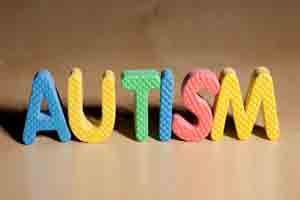- Home
- Editorial
- News
- Practice Guidelines
- Anesthesiology Guidelines
- Cancer Guidelines
- Cardiac Sciences Guidelines
- Critical Care Guidelines
- Dentistry Guidelines
- Dermatology Guidelines
- Diabetes and Endo Guidelines
- Diagnostics Guidelines
- ENT Guidelines
- Featured Practice Guidelines
- Gastroenterology Guidelines
- Geriatrics Guidelines
- Medicine Guidelines
- Nephrology Guidelines
- Neurosciences Guidelines
- Obs and Gynae Guidelines
- Ophthalmology Guidelines
- Orthopaedics Guidelines
- Paediatrics Guidelines
- Psychiatry Guidelines
- Pulmonology Guidelines
- Radiology Guidelines
- Surgery Guidelines
- Urology Guidelines
Study: Brain activity is inherited, may inform treatment for ADHD, autism

Every person has a distinct pattern of functional brain connectivity known as a connector type or brain fingerprint. A new study conducted at OHSU in Portland, Oregon, concludes that while individually unique, each connector type demonstrates both familial and heritable relationships. The results published today in Network Neuroscience.
"Similar to DNA, specific brain systems and connectivity patterns are passed down from adults to their children," said the study's principal investigator Damien Fair, Ph.D., P.A.-C., associate professor of behavioral neuroscience and psychiatry, OHSU School of Medicine. "This is significant because it may help us to better characterize aspects of altered brain activity, development or disease."
Using two data sets of functional from more than 350 adult and child siblings during resting state, Fair and colleagues applied an innovative technique to characterize functional connectivity and machine learning to successfully identify siblings based on their connector type.
Through a similar process, the team also distinguished individual sibling and twin pairs from unrelated pairs in both children and adults.
"This confirms that while unique to each individual, some aspects of the family connectome are inherited and maintained throughout development and may be useful as early biomarkers of mental or neurological conditions," said lead author Oscar Miranda-Dominguez, Ph.D., research assistant professor of behavioral neuroscience, OHSU School of Medicine.
Overall, the connector type demonstrated heritability within five brain systems, the most prominent being the frontoparietal cortex or the part of the brain that filters incoming information. The dorsal attention and default systems, important for attention or focus and internal mental thoughts or rumination, respectively, also showed significant occurrences.
"These findings add to the way we think about normal and altered brain function," said Fair. "Further, it creates more opportunity for personalized and targeted treatment approaches for conditions such as ADHD or autism."

Disclaimer: This site is primarily intended for healthcare professionals. Any content/information on this website does not replace the advice of medical and/or health professionals and should not be construed as medical/diagnostic advice/endorsement or prescription. Use of this site is subject to our terms of use, privacy policy, advertisement policy. © 2020 Minerva Medical Treatment Pvt Ltd